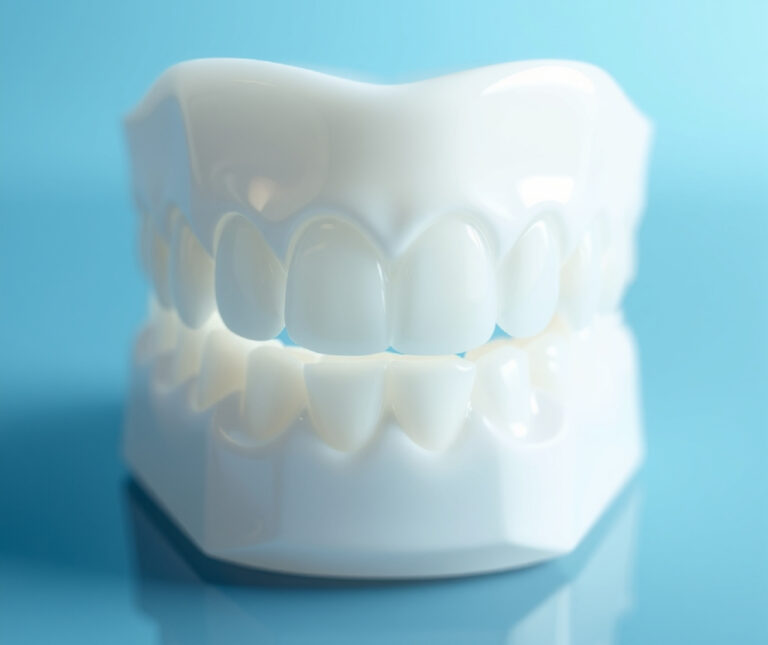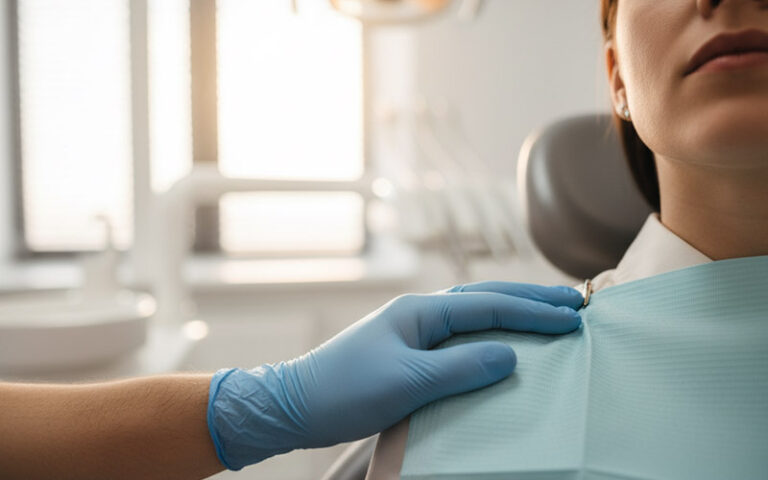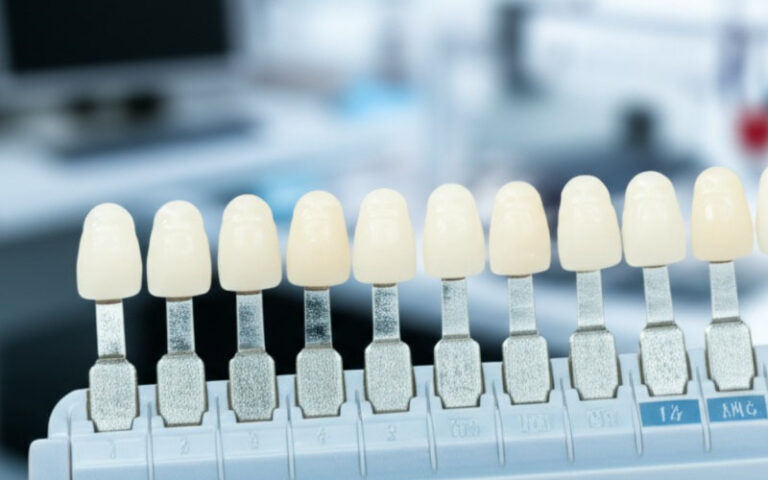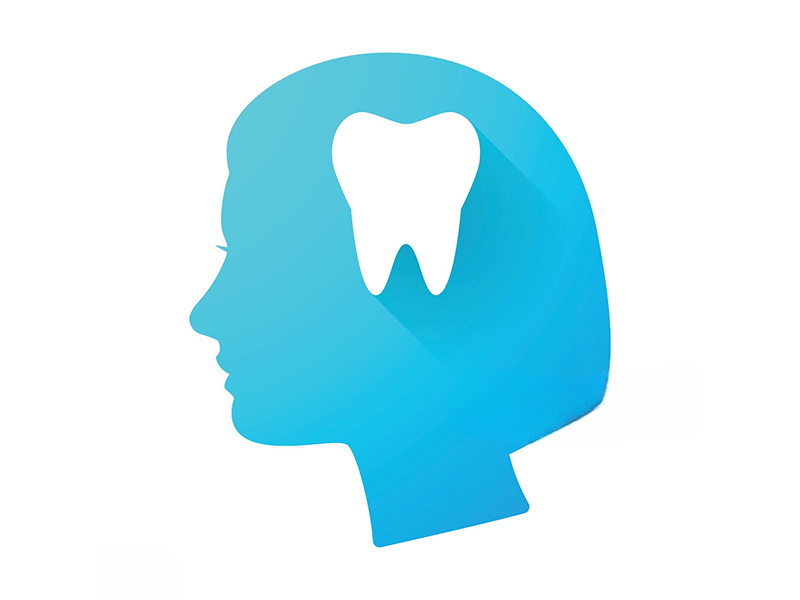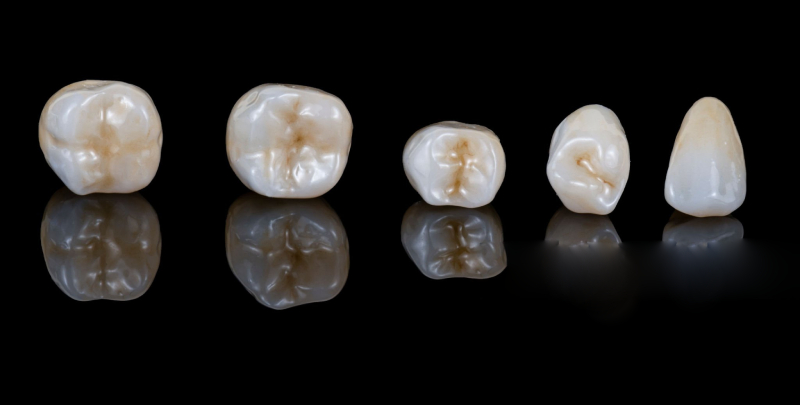
Tooth Turning Black But No Pain? Understanding the Causes, Risks, and What to Do
Worried about a black tooth that doesn’t hurt? You aren’t the only one. Many people notice a tooth getting darker or even turning black and wonder if it’s a big deal—especially when it doesn’t hurt. This article breaks down why a tooth can turn black without pain, why it matters, and what you should do next. I’ll show you what the black color means, how it can affect your health, and which treatments can help most. Want to keep your smile healthy and strong? This is for you.
Table of Contents
What Does It Mean When a Tooth Turns Black But Doesn’t Hurt?
Let’s start with something simple. Imagine this: one morning, you look in the mirror and see a tooth that looks darker than the rest. Maybe there’s a black spot on one of your back teeth near the gums, or maybe it’s your front tooth turning gray or black. But you don’t feel any pain—not even a little bit.
You might wonder, “If it doesn’t hurt, is it really a problem?” The answer: Yes, it can be. Teeth can turn dark or even black for lots of reasons. Sometimes it’s just a stain from something you ate or drank. Other times, there’s something wrong inside the tooth.
Here’s why you should keep reading: Even when there’s no pain, a black tooth can mean something serious—like a dead nerve or hidden cavity. Ignoring it could bring on bigger dental problems later.
Should You Worry About a Black Tooth With No Pain?
Here’s the big question: Is a black tooth with no pain something to worry about? Honestly, yes.
Pain is your body’s warning sign, but sometimes a tooth can lose its nerve and stop hurting—even when it’s not healthy anymore. A black tooth can mean:
- There’s deep decay inside the tooth, but the nerve already died.
- An old injury killed the nerve (pulp death).
- Sometimes, a dark spot is just a harmless stain.
- Every now and then, medicine or fillings can cause the color change.
Still, you shouldn’t just hope for the best. You need a dentist to tell the difference between a stain and real trouble. If you let it go, you could end up with an infection, abscess, or even lose the tooth—even if it never hurts.
The Different Types of Tooth Stains: What’s on the Surface and What’s Inside?
Dentists put tooth stains in two groups: extrinsic (on the outside) and intrinsic (inside the tooth).
Extrinsic Stains
- These stains are on your tooth’s outside layer.
- Caused by what you eat and drink (like coffee, tea, soda, wine, dark fruits).
- Smoking and chewing tobacco can make stains worse.
- Some mouthwashes and iron pills can also stain teeth.
The good news? Most outside stains come off with a cleaning at the dentist.
Intrinsic Stains
- These happen deep inside your tooth.
- Causes include a dead nerve, old injury, deep cavity, or even old fillings (like with silver metal).
- Inside stains are usually more serious and harder to fix by yourself.
Table: Comparing Extrinsic and Intrinsic Tooth Stains
| Stain Type | Where Is It? | Common Causes | Can Cleaning Fix It? |
|---|---|---|---|
| Extrinsic | Outer enamel | Food, drink, tobacco | Often, yes |
| Intrinsic | Inside tooth | Dead nerve, old injury, deep decay, fillings | Usually needs treatment |
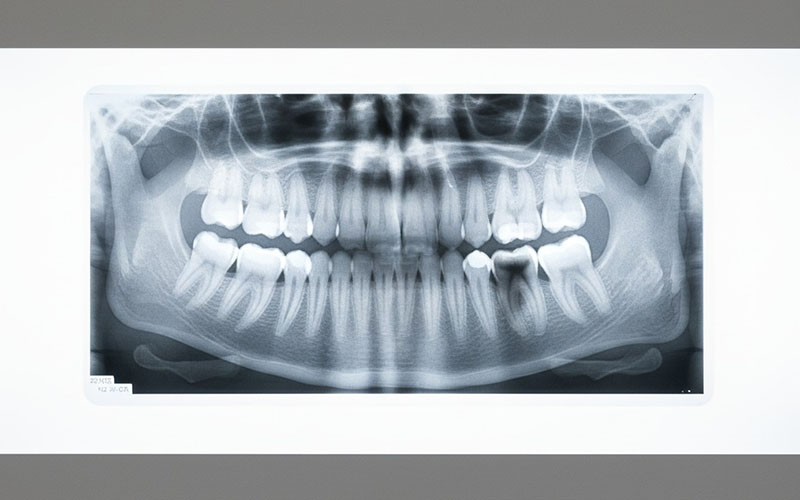
Most Common Causes: Why Do Teeth Turn Black?
Let’s look at the main reasons people get a black tooth with no pain. I’ve seen these with my own patients and they show up in the research, too (see references [1], [2]):
1. Pulp Necrosis (Dead Tooth)
- The nerve in a tooth can die from a hit or deep cavity.
- When that happens, the tissue inside breaks down and stains the tooth, turning it gray or black.
- The nerve is dead—so you don’t feel pain.
2. Deep Dental Cavities
- Bad cavities that go down into the tooth can turn the tooth black.
- If the nerve died already, you may not feel anything—but bacteria and decay can keep spreading.
3. Old Amalgam (Silver) Fillings
- Over time, metal fillings leak tiny bits that stain the tooth gray or black.
- This is more common in older folks or teeth with old fillings.
4. Tooth Trauma
- A hit, fall, or bump can kill the tooth’s nerve.
- The dark color can show up weeks, months, or years later—even if the hurt tooth never aches.
5. Surface Stains
- Food, drinks, medicine, and mouthwashes can stain your enamel black.
- A cleaning at the dentist usually takes away these stains.
6. Rare Causes
- Rare problems (like certain weird tooth problems or things you’re born with) can darken a tooth from inside.
How Can a Tooth Die and Not Cause Pain?
This one surprises a lot of people. You’d think a dead tooth would always hurt, right? Not always. Sometimes, the nerve in your tooth just dies quietly. Here’s how it works:
- When a cavity or hit hurts the nerve inside your tooth, it swells, then cuts off its own blood.
- Once the nerve dies, pain may go away—but the problem doesn’t.
- The tooth looks darker as the dead stuff breaks down and stains it from inside.
- Bacteria can still live there, causing infection and bone trouble.
Pain is gone, but problems are still happening under the surface. You might not notice until you see a dark spot or black tooth in the mirror.
What Can Happen If You Ignore a Black Tooth?
Let’s be real: ignoring a black tooth is risky.
Here’s what I’ve seen happen:
- Infection – Dead teeth can get infected at the root. An abscess can form, and the infection may spread to your jaw or even through your body.
- Tooth Breaks – A dead tooth is weak and can break or crumble—sometimes just when you’re eating.
- Bone Loss – If you ignore a black tooth, it can hurt the bone supporting your other teeth.
- Bigger Dental Problems – If you wait, you could need more expensive and tough treatments later.
You might not feel pain until a lot of damage is done. That’s why you should act now, even if you feel fine.
What Should You Do When You See a Black Tooth?
This is the big thing to remember:
Don’t wait. See your dentist as soon as you spot a black tooth—even if it doesn’t hurt.
Here’s a quick to-do list:
- Book a dental visit right away.
- Tell your dentist about any injury, even an old one.
- List all medications, vitamins, or health problems.
- Don’t try to scrub or bleach it at home.
Let the dentist check it out. They’ll know if it’s just a stain or something more. If you need a tooth expert, they can send you to one.
How Will the Dentist Find Out What’s Wrong?
Here’s what usually happens when you see the dentist for a black tooth:
- Checkup – The dentist will look for outside stains, cavities, and gum problems.
- Dental X-rays – These show hidden decay, dead nerves, and how healthy your bone is.
- Tests for Tooth Life – The dentist may use cold, heat, or a small electric test to see if the tooth is alive.
- Shine a Light – They may shine a light to see cracks or inside stains.
- History Check – You’ll talk about injuries, diet, smoking, and any medicine you take.
This careful check finds what’s really going on—and the best way to fix it.
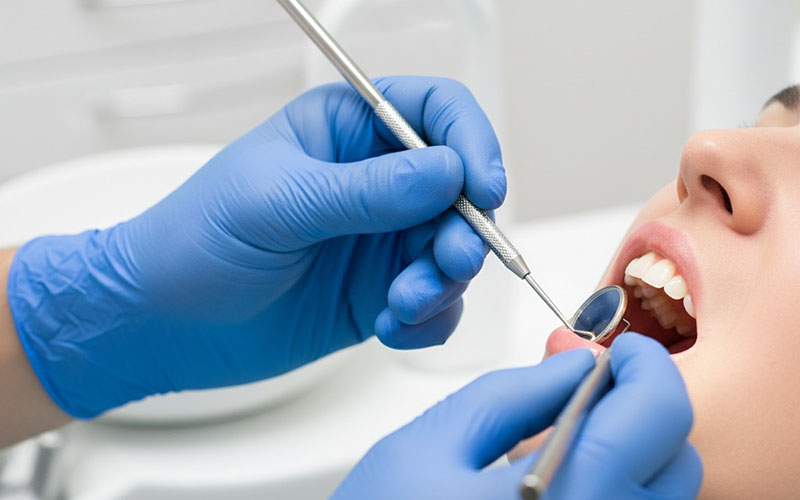
Which Treatments Fix a Black Tooth Without Pain?
The best fix depends on what’s causing the black tooth. Here’s a rundown:
For Surface Stains
- Dental Cleaning: A dental cleaning can often remove outside stains.
- Whitening Products: With the dentist’s advice, you could use a safe whitening toothpaste or trays.
- Whitening at dentist office: For tough stains, whitening at the dentist usually works best.
For Inside Stains (Intrinsic)
Dead Nerve or Deep Decay:
- Root Canal: The dentist removes the dead tissue, cleans out any infection, and seals the tooth. You might need a crown for strength and looks.
- Inside Bleaching: After a root canal, the dentist may put a bleaching stuff inside the tooth to help the color look better.
- Crown or Veneer: These cover and protect a dark tooth, making it stronger and better looking.
- Filling or Pulling: If decay isn’t too bad, a filling may work. If the tooth’s really bad, they might need to pull it.
If it’s a stain from an old metal filling:
- Sometimes, you don’t need treatment if the tooth is still healthy. Your dentist can just keep an eye on it.
How Can You Keep Your Teeth From Turning Black?
Stopping problems is always easier than fixing them. Here’s what I tell my own patients:
- Brush twice a day with fluoride toothpaste.
- Floss every day to clean between your teeth.
- Cut back on stain-makers like coffee, tea, soda, red wine.
- Don’t smoke or chew tobacco.
- Use a mouthguard if you play sports or grind your teeth.
- Go for regular dentist checkups and cleanings.
- Get small tooth problems fixed early—before you see pain or dark spots.
Summary Table: Black Tooth Causes and What To Do
| Cause | Is There Pain? | Type of Stain | What To Do |
|---|---|---|---|
| Outside stain (food, drink) | No | Extrinsic (outside) | Dentist cleaning |
| Dead nerve | Often no | Intrinsic (inside) | Root canal, maybe bleach or crown |
| Deep cavity | Sometimes no | Intrinsic/Extrinsic | Filling, root canal, crown |
| Old metal filling | No | Intrinsic | Just watch it, crown if needed |
| Old injury | No | Intrinsic | Root canal, crown or veneer |
| Rare conditions | No | Intrinsic | Dentist decides, may treat or watch |
Should You Try Home Remedies?
I get this one a lot. My answer? Don’t try to whiten or fix a black tooth at home until your dentist says it’s just a surface stain.
Whitening toothpaste or strips can help with coffee or tea stains, but they don’t do anything for a dead tooth. They also won’t fix decay or bigger problems inside your tooth.
If the blackness comes from inside the tooth, only the dentist can treat it.
What Risks and Dangers Come With a Black Tooth?
Here’s what can happen if you ignore a black tooth with no pain:
- Infection can spread quietly: Dead teeth are perfect for bacteria. You might get an abscess even if you feel fine now.
- Bad breath: Black or rotting teeth can cause mouth odor and embarrassment.
- Bone loss: An untreated dead tooth can ruin the bone under your other teeth.
- Tooth loss: Wait too long, and you might lose the tooth for good.
- Body health risks: Sometimes, a bad dental infection spreads to your jaw, neck, or whole body (see references [3], [4]).
Bottom line: Don’t risk it. Get a dentist to check your tooth.
Final Checklist: What to Remember About Black Teeth
- If you see a black or dark tooth—even without pain—call your dentist.
- Most black teeth are painless because the nerve inside is dead.
- You can’t tell how serious it is just by whether it hurts or not.
- Outside stains can usually be cleaned off, but inside stains are dangerous.
- Dead nerves, deep cavities, and old injuries are the biggest causes.
- The sooner you act, the better your chances to save the tooth.
- Prevention is best. Brush, floss, eat smart, and see your dentist often.
FAQs
Q: Can a black tooth ever get white again by itself?
A: No, once a tooth turns black from inside, you’ll need your dentist to help fix it.
Q: Does a black tooth always mean I’ll lose it?
A: Not always! If you see a dentist early, most black teeth can be saved with a root canal, crown, or even whitening.
Q: What if my kid’s tooth turns black and doesn’t hurt?
A: Make an appointment with a kids’ dentist. Children’s teeth can die from injury or cavities, too.
Q: Can I whiten a black tooth with those store kits?
A: Only if it’s just a surface stain. If the blackness is because of a dead nerve or deep cavity, at-home kits won’t fix it—they might make things worse.
Bullet Point Summary: Most Important Things to Remember
- A black tooth with no pain isn’t just about looks.
- Act fast—waiting can lead to tooth loss, infection, or worse problems.
- Your dentist can tell if it’s just a stain or something serious.
- Professional cleaning helps with surface stains, but deeper problems need a dentist’s care.
- Early treatment means it’s easier, cheaper, and turns out better.
- Stopping problems before they start keeps your teeth white and strong.
References:
[1] American Dental Association. “Tooth Discoloration: Causes and Treatments.”
[2] Centers for Disease Control and Prevention. “Oral Health Surveillance Report.”
[3] Mayo Clinic. “Abscessed Tooth: Symptoms and Risks.”
[4] National Institutes of Health. “Dental Pulp Diseases.”
Whether your tooth is just starting to turn or already looks black, acting now protects your health and your smile. If it’s your tooth, don’t wait—go get it checked today!

